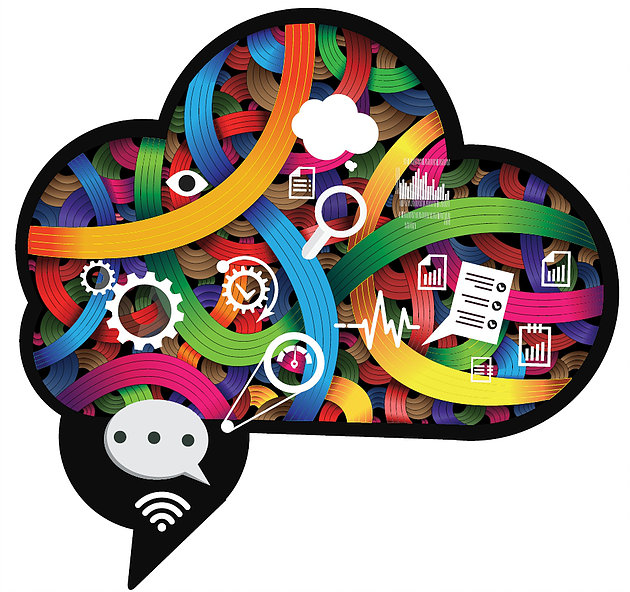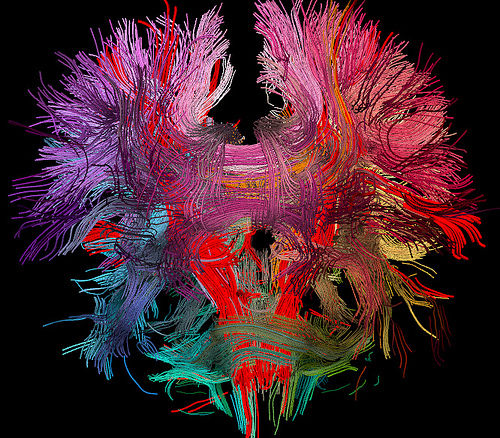
Published in PEOPLE + STRATEGY, The Professional Journal of HR People + Strategy
VOLUME 39 | ISSUE 4 | FALL 2016
Click here to download

Published in PEOPLE + STRATEGY, The Professional Journal of HR People + Strategy
VOLUME 39 | ISSUE 4 | FALL 2016
Click here to download

This blog post originally appeared at Integrated People Solutions.
Recently I worked with two corporate directors, Steve and Gary. Both hold senior level management positions, have worked for a similar number of years and have obtained impressive degrees from notable universities. Both work hard for their organization and attain solid results. However, a while back when the company started an organizational change mandate, an interesting thing happened. Gary’s behavior began to fall short of expectations. It impacted his team and their focus, productivity and attitude. For some reason, Steve didn’t show the same behavior traits, and neither did his team. Why?
It all comes down to mindset. Mindset impacts business relationships, and ultimately the success of an organization’s culture and the bottom line. Gary works hard to show his successes. He’s very good at outlining what needs to happen, but he’s not very interested in promoting his people or making them look good. He sees the world one way and it rarely changes. Steve, on the other hand, is a natural coach who believes that he shines when his people do well. He’s happy taking a backseat to them. He doesn’t tell people what to do and instead asks questions to lead them to the best conclusion. He understands that leaders often fall short because they don’t fully understand or see the ramifications of their decisions. He’s always looking for ways to develop their perspective.
Mindset is an idea about our intelligence and talent. People with a fixed mindset, like Gary, believe that traits are given or “fixed,” and that talent alone fosters success. On the other hand, people with a growth mindset, like Steve, believe that their basic abilities are simply a launching pad for growth and development. People with growth mindsets love to learn. And, more importantly, they show resilience, which is critical to success.
Carol Dweck, Ph.D., is a world-renowned researcher in the field of motivation at Stanford University, and she developed this concept. She says:
· Intellect and talent don’t guarantee success. They stand in its way.
· Praising doesn’t foster self-esteem and accomplishment. It jeopardizes them.
· Teaching a simple concept about the brain raises productivity.
Remember Enron? Did it fall apart because of mindset paralysis? It’s possible. Many companies are driven to hire talent, because it’s seen as the secret sauce that creates success for the organization. In Enron’s case, this strategy backfired because they became myopically focused on being talented and behaving in an extraordinary manner. As a result, their fixed mindset blinded them to collaboration, innovation and external market changes.
Cultures are made up of people, and overbearing and critical leaders are instrumental to creating a closed mindset among their team members. They can force their teams into fixed mentalities that prevent learning and growth. As a result, team members will worry about being judged and about what the boss thinks, rather than customers and the marketplace.
Let’s go back to Gary for a moment. Without realizing it, he’s being an overbearing leader. It’s his operating set point. This was harder to see prior to the change because he was working in an environment that he knew how to navigate and control; one that praised his successes. Moreover, he got away with never being wrong. Now he consistently operates outside his comfort zone. His constant need to be right, to govern and control how work is accomplished and his manipulation of messages to his boss all create undue stress for his people. In his case, one of his most talented business line managers only remained in her position for two years before resigning. No matter what she did to improve the organization, she was always made to be wrong. In addition, Gary comes to work every day feeling uncomfortable and trying to force everyone else to ease his pain by playing by his rules. His people feel intimidated into supporting him while at the same time pulled by the company’s new direction.
In studies, researchers have found that people with growth mindsets make better negotiators. They’re more easily able to push beyond obstacles and to reach win-win solutions. Moreover, managers with a growth mindset are more observant about their employees’ improvement. They don’t remain stuck in an impression that can limit them, and their employees see these managers as offering better coaching and employee development.
Managers with a growth mindset, like Steve, foster a culture of coaching which, in turn, creates opportunities for insight and innovation. Steve has been an ongoing client of mine for three years. We work together to offer growth strategies that open his employees’ minds to the possibilities they’re creating in their jobs. Not all of them will become leaders, but in Steve’s eyes all of them are leaders in their sphere of influence. He manages the most productive division of the organization, and his efforts to promote and build his people have made him a valued member of the executive team.
Gary remains a valued member of the organization, but he’s tested his relationships in the company. I was asked to work with Gary, and we’re focused on changing his mindset from one that is fixed to one that’s open. To do this, he is learning how skills, abilities and talent evolve throughout life. I want him to work to his talents and practice to his weaknesses. This focuses him on the process rather than the ultimate outcome of being the best all the time. We both believe he will succeed and, because the science says it’s possible to learn a new mindset, he’s optimistic. Stay tuned.
I have known Sophia Kristjansson for several years now. She is also one of Integrated People Solutions iPeople partners as well. Her recent blog post hits several solid points home that are common with many of the leaders we place through our executive search work here at Integrated People Solutions.

Post originally appeared at Emergenetics International.
I just returned from a week-long session with a group of HR leaders at which we discussed current trends in leadership development. One quickly percolated to the top – the mindful leader.
Mindful leadership is a phrase that gets thrown around to describe a leader-like characteristic organizational leaders want to see in others and also incorporate into their own lives. In general, HR leaders agree that organizations need leaders who are not only self aware, focused, strategic and creative, but who also are mindful of how they make decisions and interact with others. Relationships are key in today’s economy. So to help their employees grow, some of these companies practice mindfulness exercises as a part of their leadership development smorgasbord.
This fascinated me. While it’s well documented that mindfulness is generally beneficial, I wondered how these organizations wove a traditional Buddhist practice into their cultures. How was it affecting those who learned a meditative practice as well as those who didn’t choose it? Did employees feel it was mandatory? Who taught the classes? Did the teachers know how to help the students through tough patches? Of those who started a practice, who continued on?
These questions circled because I recently coached an executive who worked in an organization that practiced mindfulness exercises as an option for decreasing stress at work. He was so excited about what he was learning and how it made him feel that he decided to integrate a short meditation into the first 60 seconds of his team and division meetings. Bad call. Because of his status in the organization, people felt obligated to follow his lead and didn’t want to offend him. However, the practice wasn’t a fit with most of his colleagues who felt he should keep his mindfulness discovery to himself. He came close to losing the trust and respect of the people with whom he worked.
Five years ago I started a daily mindfulness practice. I generally enjoy its benefits, but at times I can’t concentrate because of external thoughts or physical discomfort. To be honest, sometimes I don’t want to sit and meditate for 20 minutes so I skip it. I do have a teacher who draws me back in for one reason – I feel less stressed when I meditate on a regular basis. With it I’m more centered, observational and creative. I know this is not very scientific, but I feel better. However, the process isn’t easy and takes focus, drive and commitment. This kind of choice isn’t for everyone; in fact, it’s very personal.
The HR leaders in my group pointed to current research showing that practicing mindfulness leads to more grey matter in the brain. In one particular study, “concentrations of grey matter increased in areas of the brain responsible for memory, learning, emotional regulation, self-referential processing and perspective.” Here’s another point: After an eight-week mindfulness practice, part of the brain’s flight, fight and freeze center, the amygdala, showed decreased density by imaging on the right side. As the amygdala shrinks, the prefrontal cortex, associated with awareness, concentration and decision making, becomes thicker. These relatively new findings seem to hold a lot of promise.
As the HR leaders talked, something else tugged at my thoughts: If someone practices mindfulness, develops better awareness and decreases stress, she’s able to better regulate her environment. After all, if she is more capable, she can work harder and longer. So, who really benefits from the mindful leadership training if it’s sponsored by an organization?
In that moment we were talking about the upsides of mindfulness, but a negative side could be perceived. Furthermore, I know from experience that many organizations like to take on programs without fully thinking through all the ramifications of their choice. The client situation I mentioned earlier in this post illustrates a possible negative outcome. I told the HR leaders that I’m not against the practice, I simply wanted them to realize any potential pitfalls in their desire to help their people. After all, they are uniquely placed to be stewards of organizational culture and leadership development.
Instead of using a traditional Buddhist approach to mindfulness in organizations, I suggest a secular approach that involves noticing the moment. I’ve been drawn more and more to Ellen Langer, Ph.D.’s work in mindlessness and mindfulness at Harvard University. Some have dubbed Dr. Langer the Mother of Mindfulness. She describes mindfulness “as the simple act of actively noticing things with a result of increased health, wellness and happiness.” She encourages people to focus on the present state. She’s never meditated in the Buddhist sense and she says that “eastern notions of meditation inspire post-meditative mindfulness, which is different from actively noticing in a present state.” Her unconventional studies illuminate what neuroscience pinpoints: “Our experience of everything is formed by the words and ideas we attach to them.”
Actively noticing things is quite specific and more powerful than simply saying that one wants to be present. What does “being present” really mean, especially to someone who is potentially unaware or mindless to the present moment? The act of noticing immerses us in the present state and allows us to observe something that will alter our perception of the experience. When I sit back and observe someone, I can either rely on my experience of that person or my judgment, which won’t get me anywhere new. If, on the other hand, I decide to look for three new things about that individual, my perception of the person evolves and grows. All of a sudden it opens a new world based in curiosity. This is awareness at its core.
Here’s what it comes down to: If you actively notice someone’s behavior, you’ll start to see things that weren’t perceptible before. By doing so, you may learn something new about that person that questions a belief or perception you had. That’s what the Emergenetics Profile sets people up for beautifully. By illuminating behavior on a sliding scale, you’re given a framework in which to operate. This is a simple way to practice what Dr. Langer describes as mindfulness—and, according to the research I mentioned above, get smarter in the process.

We’re starting a blog!
Neuroscience fascinates me and I see infinite possibilities for it in the field of leadership. Isn’t it amazing that we are capable of change throughout life? What can we do to make change more deliberate and long lasting? These questions led me to pursue my masters in neuroscience, to conduct studies on how biology affects our actions in organizations and to start this blog. I’ve got a lot to say on the topic.
I want to inspire you to be your most authentic and creative in life — through the understanding of the most powerful tool you possess: your brain.
What’s exciting is that neuroplasticity is real — but it’s more challenging than you might think. We first need to understand what we can change about ourselves, how to approach an effective change process and finally how to maintain it over the long term. (No, we can’t change everything.) I have found that neuroscience grounds the change process — what we become aware of empowers us.
Brain science helps us go beyond personality to understand the biological relationship between thoughts, behavior and perception — vital awareness all leaders must master in order to engender trust, rapport and success within teams and organizations. (There’s some work to be done!) And although we do this naturally to some degree, it’s helpful to have a new perspective to ease the learning pain and to foster greater awareness.
What I’ve seen is that people who use brain science to further themselves as leaders become better at managing themselves, their minds and their environments. They express more happiness, communicate with increased clarity and feel more connected with themselves as well as people around them. Doesn’t that sound good.
Share your thoughts and experiences with me and your colleagues, family and friends. I look forward to a rich, ongoing conversation with you.